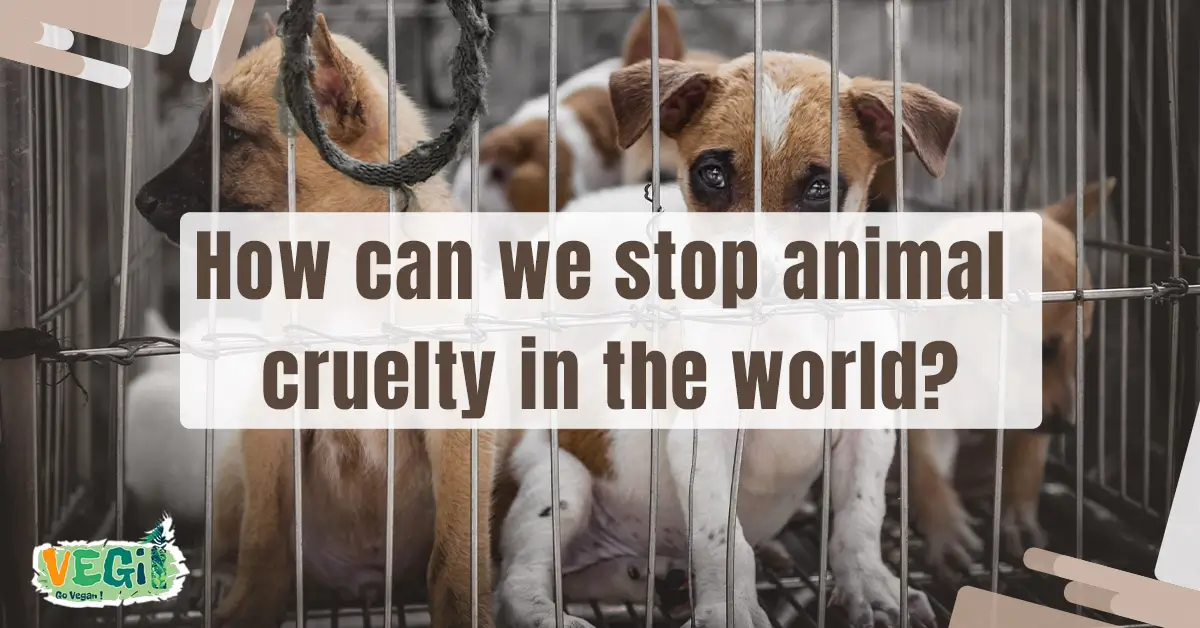Animal cruelty is a profound moral and social issue that persists across the globe. It encompasses a wide array of inhumane practices, including neglect, abuse, exploitation, and the unlawful treatment of animals. While the problem may seem insurmountable, solutions exist that can significantly mitigate its prevalence. In this article, we will explore various strategies aimed at combating animal cruelty, rooted in both grassroots movements and legislative progress.
One of the most effective avenues for curbing animal cruelty is education. Raising awareness about the plight of animals can dramatically change perceptions and behaviors. Schools, community centers, and online platforms can serve as conduits for information dissemination. Educational programs that focus on empathy and compassion towards animals create a foundation for future generations. Through interactive workshops, documentaries, and literature, individuals gain insights into the ethical treatment of animals. Understanding their sentience fosters a sense of responsibility among individuals.
Moreover, children who interact positively with animals are more likely to grow into empathetic adults who respect all living beings. Programs that promote responsible pet ownership encompass everything from understanding animal behavior to humane training techniques. By nurturing kindness and respect, educational initiatives tackle the root causes of animal cruelty.
While education lays the groundwork, legislation provides the framework necessary for change. Stricter laws and regulations regarding animal welfare can serve as substantial deterrents against cruelty. Governments should prioritize the enactment and enforcement of laws that protect animals from mistreatment. Countries that have implemented comprehensive animal protection laws have witnessed notable declines in abusive practices. This involves ensuring that penalties are severe enough to discourage potential offenders while also supporting rehabilitation programs for individuals found guilty of animal cruelty.
Another pivotal area of focus is the importance of community engagement. Grassroots movements and local organizations play a crucial role in creating a community ethos that rejects animal cruelty. Volunteer initiatives encourage individuals to get involved in rescue operations, fostering a sense of collegiality while providing assistance to injured or abandoned animals. These organizations often hold adoption events, spay/neuter clinics, and educational seminars, which aid in reducing the stray population and promoting responsible pet ownership.
Furthermore, leveraging social media platforms is a potent tool in spreading awareness about animal cruelty. Campaigns that go viral can evoke public outcry, prompting legislative changes while mobilizing community action. The rapid dissemination of information permits advocates to rally support swiftly, highlighting instances of cruelty and demanding immediate action. Online petitions and fundraising events for shelters and rescue organizations can also galvanize public support, making a tangible impact in the fight against cruelty.
Encouraging sustainable and humane consumer choices is another avenue for reducing animal cruelty. The rise of plant-based diets and cruelty-free products reflects a growing awareness among consumers regarding the conditions animals endure in the food and fashion industries. By avoiding products tested on animals and supporting ethical brands, consumers can actively participate in reducing demand for unethical practices. Initiatives that promote local, humane farming can contribute to this shift, ensuring that animals are treated with respect throughout their lifetimes.
The role of veterinary professionals cannot be underestimated either. Vets not only treat the physical ailments of animals but can also be advocates in the fight against cruelty. Training programs that emphasize the recognition of abuse and neglect enable veterinarians to act as vigilant guardians over animal welfare. They can educate pet owners about responsible care while reporting instances of suspected abuse to authorities. By incorporating animal welfare training into veterinary curriculums, the next generation of professionals can be equipped to address these issues effectively.
Aside from education and legislation, collaborative efforts between various stakeholders can drive meaningful change. Partnerships among non-profit organizations, government entities, and businesses can leverage resources effectively. Joint initiatives can lead to comprehensive campaigns that target multiple aspects of animal cruelty, creating a united front against this social ill. These collaborations can facilitate shared resources, innovative solutions, and a broad-based approach that addresses the complexities of animal welfare.
As we explore practical solutions, it is crucial to acknowledge the significance of research and innovation in tackling animal cruelty. Scientific inquiries into animal behavior, welfare, and the psychological impacts of abuse can inform policymakers, organizations, and the general public. By investing in research, authorities can develop informed regulations and programs that address the nuances of cruelty. Ethologists, veterinarians, and social scientists can contribute dimensions of understanding that bolster advocacy efforts and foster empathetic societies.
As we consider these multifaceted approaches, hope abounds in the potential for change. The combined efforts of individuals, communities, organizations, and governments can forge a world where animals are treated with dignity and respect. Solutions are not only viable; they are being implemented across the globe. From legislative reforms to community education and consumer advocacy, collective actions are driving the movement against animal cruelty.
In conclusion, while the fight against animal cruelty is ongoing, the prospect of meaningful change shines through. With persistent education, robust laws, community engagement, and innovative solutions, the vision of a world free from cruelty towards animals is increasingly within reach. It is a shared responsibility—one that calls upon humanity to act decisively, compassionately, and collaboratively to protect those who cannot speak for themselves.








